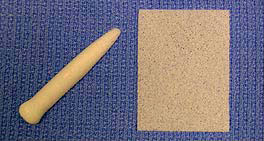Alar Collapse
This is a very common problem which occurs due to inwards prolapse of the side wall of the nose on inspiration. In many patients this is simply due to the lack of intrinsic stiffness in the side wall of the nose which may be congenital or acquired as part of the ageing process. For others, this complaint is the end result of over resection of the cartilages that form the side wall of the nostril during rhinoplasty where the surgeon is attempting to narrow and refine the nasal tip.
Many techniques have been tried for this in the past including the use of external adhesive dilator strips, internal nasal dilator devices and more recently years the surgical insertion of “alar battens” along the side wall of the nasal tip. These consist of either pieces of cartilage or artificial material which induce a stiffening effect on the tissues, much in the same way as a batten in a sail gives it some rigidity. Previously septal or ear cartilage has been used to fashion battens. I have not found this to produce an acceptable degree of correction as this material bends too easily giving less than ideal results.

A new technique is now available and offered using both permanent nylon sutures (lateral crural spanning sutures) which are placed across the tip cartilages helping to support and lateralise the side wall of the nose and medpor battens which are more rigid and less bulky than cartilage giving a superior result . I have found this to give consistently superior results when compared to previous techniques.
Medpor

This innovative material has been used in reconstruction of defects of facial bones and skull for over 20 years. In recent years this has been increasingly used to deal with nasal problems such as the saddle nose as an alternative to the traditional use of rib grafts. In the long term many rib grafts twist giving unsatisfactory late results and patients experience significant pain from the donor site. Thin Medpor sheeting can also be used to straighten a crooked nose, to augment the tip where tip support is deficient and to correct alar collapse.
The material biointegrates with the surrounding tissues due to its porous nature which allows ingrowth and vascularisation from adjacent structures. I have found It extremely effective in my patients where crookedness of the nose (either post-traumatic or congenital) is due to deformity of the dorsal aspect of the nasal septum, for reconstruction of severe saddle nose deformity and in the treatment of alar collapse.